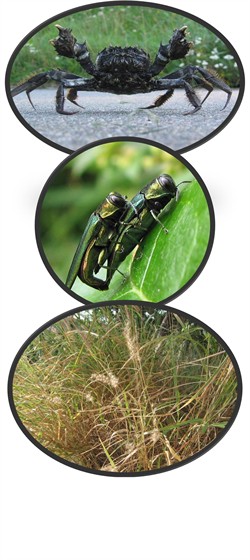
An alien species is a species, subspecies or lower taxon, introduced outside its natural past or present distribution; this includes any part, gametes, seeds, eggs, or propagules of such species that might survive and subsequently reproduce.
An invasive alien species (IAS) is an alien species whose introduction and/or spread threaten biological diversity (
decision VI/23).
Invasive alien species occur in all taxonomic groups, including animals, plants, fungi and microorganisms, and can have severe negative environmental, economic and social impacts. IAS represent one of the primary threats to biodiversity, and the risks posed by invasive alien species are likely to increase due to increased global trade, transport, tourism and synergies with other factors of biodiversity loss such as climate change.
Common characteristics of IAS include rapid reproduction and growth, high dispersal ability, phenotypic plasticity (ability to adapt physiologically to new conditions), and ability to survive on various food types and in a wide range of environmental conditions. A good predictor of invasiveness is whether a species has successfully or unsuccessfully invaded elsewhere.
Alien species are introduced to areas outside their natural range by human activities, and the mechanisms in which they are moved are named pathways. These can be intentional, for example as pets or aquarium fish, or unintentional such as a stowaway in a shipping container. The Conference of the Parties has identified a number of pathways for the introduction of alien species, in the context of its work. For more information see
UNEP/CBD/SBSTTA/18/9/Add.1 Pathways of introduction of invasive species, their prioritization and management.
While not all the alien organisms that are transported to a new area become invasive, those who do, can have extensive negative impacts. If a species’ new habitat is similar enough to its native range, organisms may survive and reproduce. However, they must first subsist at low densities, when it may be difficult to reproduce. For a species to become invasive, it must successfully out-compete native organisms, spread through its new environment, increase in population density and harm ecosystems in its introduced range. To summarize, for an alien species to become invasive,
it must arrive, survive and thrive.